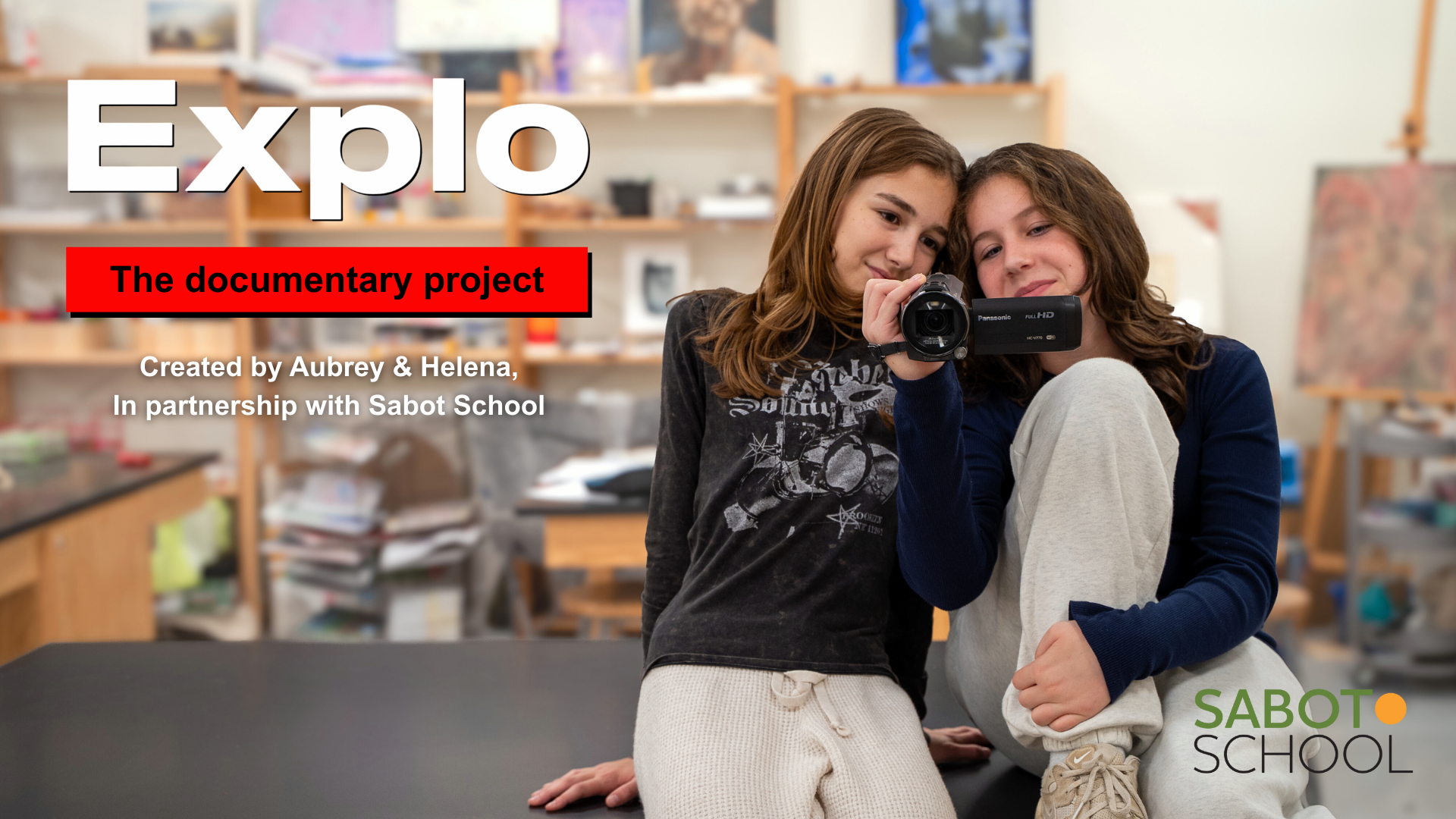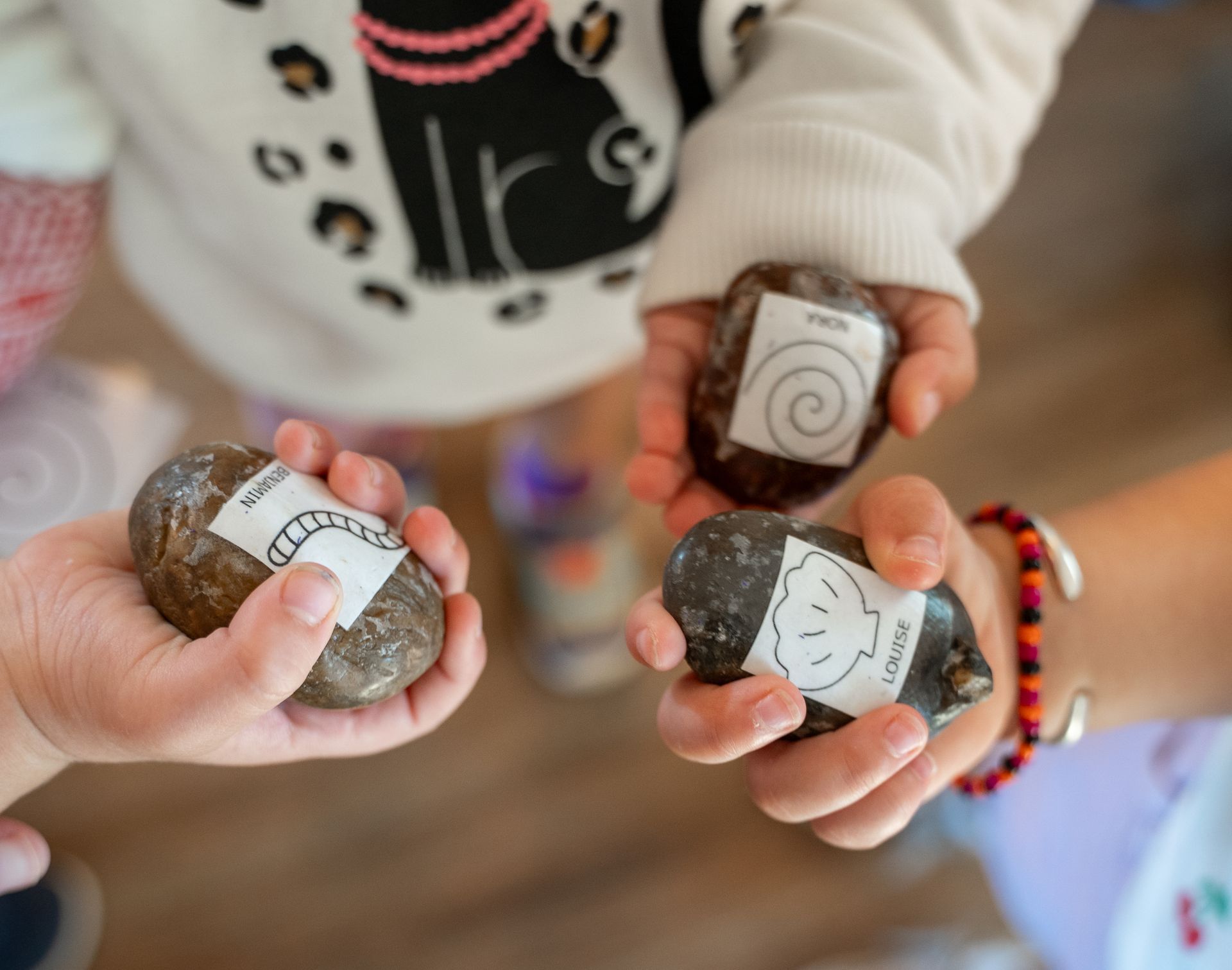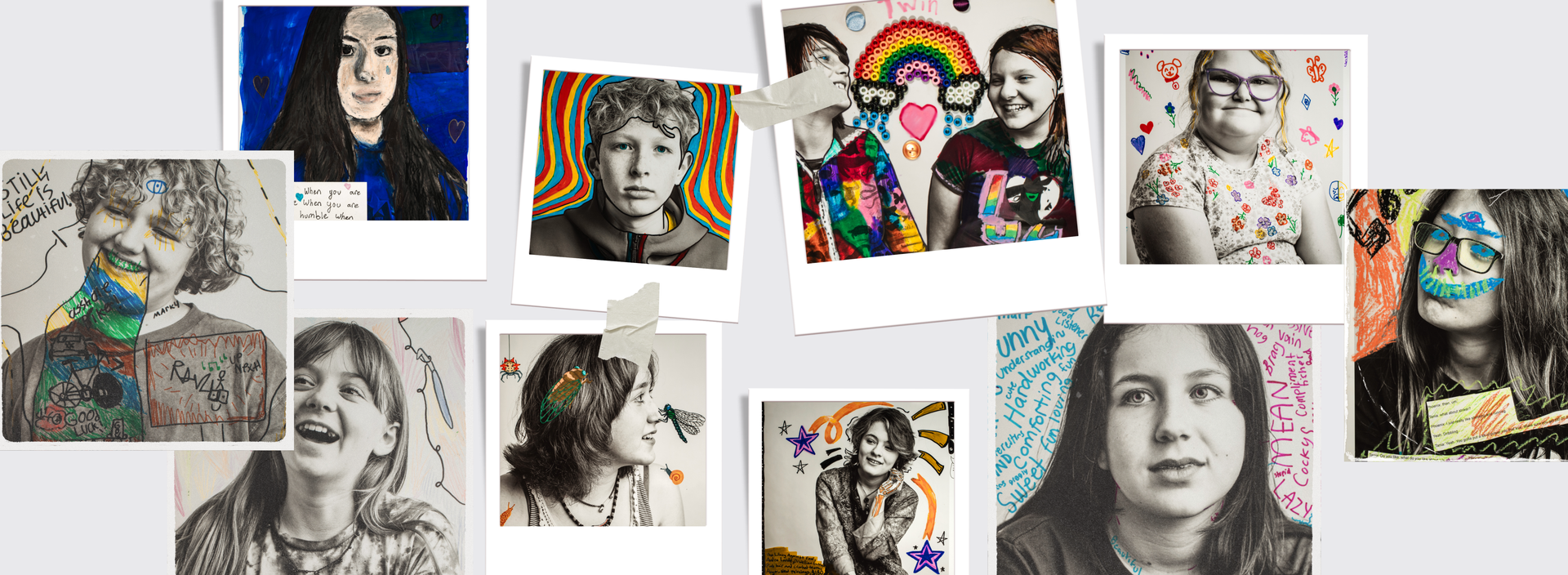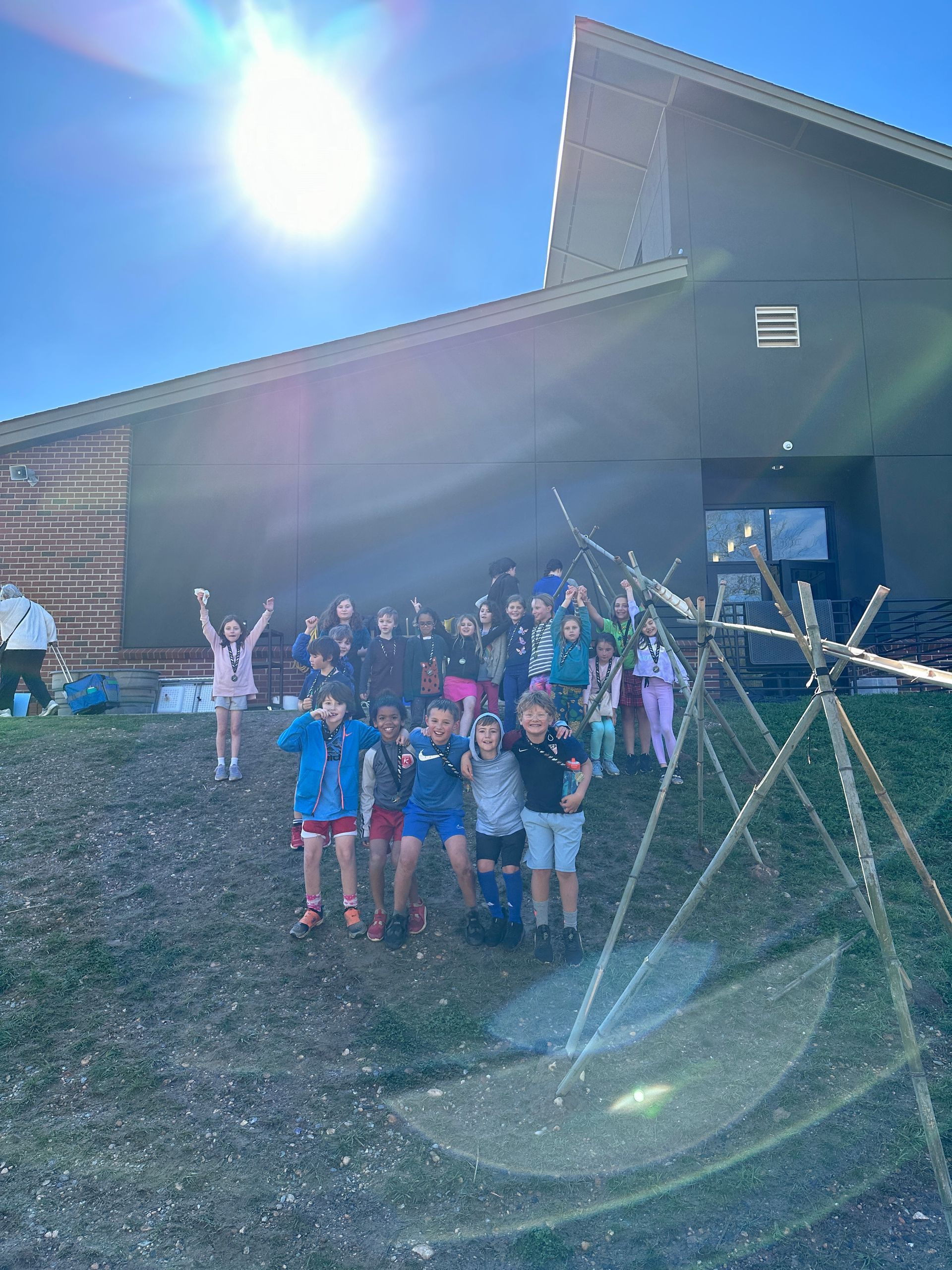Talking About School Closing and Coronavirus with Young Children
by Marty Gravett, Director of Early Childhood Education; Ann Reavey, School Counselor; and the Sabot Preschool Teacher-Researchers
 Preparing for any big conversation with children means we must first process our own emotions. This allows us to provide a safe space for the children to fully experience their emotions. After you have processed your emotions, check to see whether your child needs emotional support. Is the child ready for a conversation? Let the child lead; follow their cues on what to discuss, how to approach it (for example, through play), and how long to continue. Or introduce the topic yourself. Always include assurances that you will keep them safe.
Preparing for any big conversation with children means we must first process our own emotions. This allows us to provide a safe space for the children to fully experience their emotions. After you have processed your emotions, check to see whether your child needs emotional support. Is the child ready for a conversation? Let the child lead; follow their cues on what to discuss, how to approach it (for example, through play), and how long to continue. Or introduce the topic yourself. Always include assurances that you will keep them safe.
Most children before the age of two are not ready for any real conversations of this type. Even at two, a child is not likely to get much from a conversation unless they use language extensively for communication. But a child of any age is likely to understand that there are changes around them and that these are affecting the adults in their sphere. What follows are examples of language that will provide entry to both tough conversations and ideas for supporting your child’s engagement along the way.
Let the Child Lead the Conversation
When you start from where the child is, you will be able to help them adapt and build new understandings based on the ideas they have already formulated.
Respond by noticing and wondering:
- “I notice it can be hard for you when we talk to your friends [teachers] on the computer. I wonder what feelings you have when you see them and hear their voices.”
- “I heard you say your doll has a virus; can you tell me about that?”
- “I would like to know more about what is happening in this picture you drew.”
Respond by reflecting their thinking:
- “It sounds like you have been feeling scared [lonely, sad, frustrated, etc.] and are wondering why we are not going to school [the museum, Grandpa’s, etc.].”
- “Oh, so you heard Jonas say his grandmother is sick.”
- “You are telling me this picture is showing the bad guys outside.”
Respond with questions to help them clarify and expand:
- “I wonder what you mean by that? Can you explain it to me with different words?”
- “What do you think ‘sick’ means?” “What makes them ‘bad guys’?”
- “Tell me more.”
Respond by acknowledging their feelings:
- “I hear you are wanting to see your friends. It’s hard when we miss people. I miss my friends too.”
- “It is confusing, isn’t it!”
How to Start if Your Child Has Shown No Interest
If your child has shown no particular interest in these topics, here are a few ideas on how to launch or provoke a conversation. You might say:
- “I’m wondering if you’ve heard the words ‘coronavirus’ or ‘virus.’ What have you heard?”
- “Have you heard the news that this school year, we won’t go back to the school building?”
Be Direct About Coronavirus, But Not Alarmist
When families are together, children are likely to absorb more than they are demonstrating, even if they only hear small bits. A conversation that directly addresses information about the coronavirus could be very helpful, even reassuring, to a child.
Give correct information, but only as much as the child needs:
- “There is a virus that is making people sick. So we are staying safe and keeping others safe by following what scientists have learned we should do.”
- “We stay six feet apart.” (Show them the distance.) “ We wash our hands.” (Help them learn how to do this properly.)
Expect questions, like:
- “Will I get sick? Will you get sick?”
- “If I get sick, will it hurt me?”
- “Am I going to die? Are you [siblings, grandparents, etc.] going to die?”
Respond:
- “We might get sick, but we are lucky because I know how to take care of us if we are sick.”
- “People do die, but that is not going to happen to us for a long time.”
- “Do you remember when you had the flu and how you felt? And that you got better?
Be Direct About Not Returning to School, but Not Dramatic
If there is no conversation yet, don’t be afraid to be straightforward and share information about the school closing. You can be ready to share how things are different for you too.
Give information, such as:
- “This year, we won’t be going back to the school building.”
- “We will see our friends on the computer, but we won’t see them each day in your classroom like we used to.”
- “This is very different for us. What have you noticed about the difference?”
Expect questions about not returning to school, like:
- “Are we ever going back to school?”
- “When can I play with my friends?”
Respond:
- “We don’t know when we will go back to school, but when I learn, I will let you know. It will be a while.”
- “We will go back to Sabot when it is safe to be together. You will be a little older and might be in another classroom or building. You might have some of your friends in the same room but some might be in another room or another school.”
- For children heading to other schools: “ We can find ways to stay in connection with your friends. When it is safe to come together again, we can have playdates.” “…mail letters.” “…still have digital hangouts.”
Resist the Feeling that You Need to Have All the Answers
Recognize that it is okay if you don’t have all the answers.
Figure out answers with your child:
- “Let’s think about that together.”
- “I like that question. What do you think?”
- “I wonder who we can ask about that?”
Answer honestly:
- “What an interesting question. That is something I don’t know. But I can try to figure it out.”
- “I have to think about that. I can get back to you.”
Relaunch a Conversation You Want to Continue
If there is more conversation to be had, find a time during a moment of connection—over a meal or in a quiet moment to talk.
Remind the child what they have done before:
- “Remember when you asked me ________? I have been thinking about that and wondering.…”
- “Can you tell me more about ________?”
- “What is happening in this building you built [or drawing, or other representation]?”
Support the Conversation with Your Best Guess
Sometimes a child may not have all the words to describe things, so try filling in the blanks with a guess or a proposal. You might say:
- “You just said ‘Pop-Pop.’ Are you wondering why we can’t see your grandfather every week like we used to?”
- “You have drawn that big monster again. I am wondering if you are thinking something feels scary.”
Assure Your Child that You Will Keep Them Safe
Assurances of help and safety should go along with every conversation. Emphasize your confidence in your ability to take care of your child. You might say:
- “I will keep you safe. I have big arms to hold you even when you are scared.”
- “We have lots of ways of being safe—staying at home, washing hands, wearing a mask—and I will help you learn them.”
- “When people get sick, there are all kinds of people to help them: EMTs, doctors, nurses.”
- “Scientists are working hard on creating a vaccine to help everyone”
- “Do you remember that you got better from the flu?”
Above all, enjoy the conversations with your young one! In challenging times, remaining in connection and finding your way together will be the most important learning and the most memorable experience.
If you would like to further your understanding of the theory and approach underlying these recommendations as well as the philosophy Sabot teachers use in creating conversations in the classroom, see the full article, “Guidance on Engaging in Tough Conversations with Young Children.”
The post Talking About School Closing and Coronavirus with Young Children appeared first on Sabot at Stony Point.
SHARE THIS POST

















